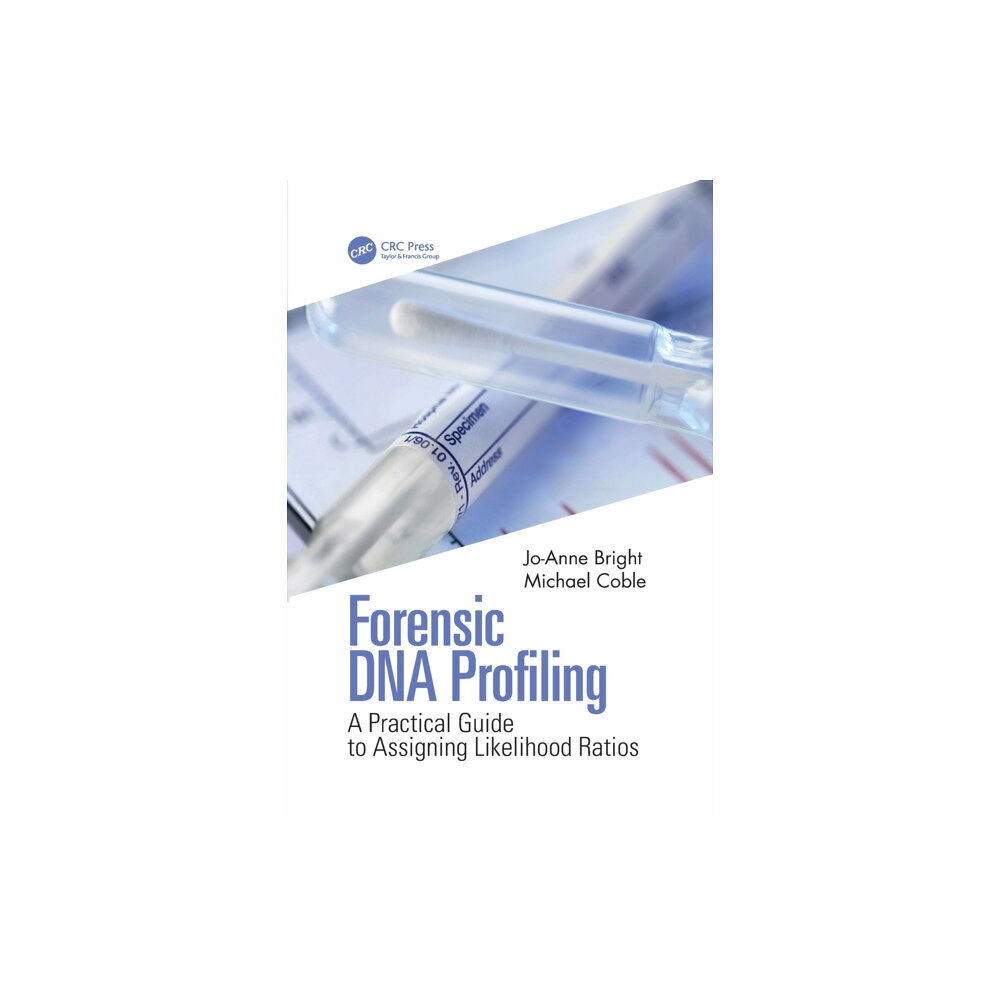- Hem
- Böcker
- Kurslitteratur
- Samhälle & Politik
- Forensic DNA Profiling (häftad, eng)

Forensic DNA Profiling (häftad, eng)
DNA testing and its forensic analysis are recognized as the “gold standard” in forensic identification science methods. However, there is...
- Fri frakt
Produktbeskrivning
DNA testing and its forensic analysis are recognized as the “gold standard” in forensic identification science methods. However, there is a great need for a hands-on step-by-step guide to teach the forensic DNA community how to interpret DNA mixtures, how to assign a likelihood ratio, and how to use the subsequent likelihood ratio when reporting interpretation conclusions.
Forensic DNA Profiling: A Practical Guide to Assigning Likelihood Ratios will provide a roadmap for labs all over the world and the next generation of analysts who need this foundational understanding.
The techniques used in forensic DNA analysis are based upon the accepted principles of molecular biology. The interpretation of a good-quality DNA profile generated from a crime scene stain from a single-source donor provides an unambiguous result when using the most modern forensic DNA methods.
Unfortunately, many crime scene profiles are not single source. They are described as mixed since they contain DNA from two or more individuals.
Interpretation of DNA mixtures represents one of the greatest challenges to the forensic DNA analyst. As such, the book introduces terms used to describe DNA profiles and profile interpretation.
Chapters explain DNA extraction methods, the polymerase chain reaction (PCR), capillary electrophoresis (CE), likelihood ratios (LRs) and their interpretation, and population genetic models—including Mendelian inheritance and Hardy-Weinberg equilibrium. It is important that analysts understand how LRs are generated in a probabilistic framework, ideally with an appreciation of both semicontinuous and fully continuous probabilistic approaches.
KEY FEATURES:
• The first book to focus entirely on DNA mixtures and the complexities involved with interpreting the results
• Takes a hands-on approach offering theory with worked examples and exercises to be easily understood and implementable by laboratory personnel
• New methods, heretofore unpublished previously, provide a means to innovate deconvoluting a mixed DNA profile, assign an LR, and appropriately report the weight of evidence
• Includes a chapter on assigning LRs for close relatives (i.e., “It’s not me, it was my brother”), and discusses strategies for the validation of probabilistic genotyping software
Forensic DNA Profiling fills the void for labs unfamiliar with LRs, and moving to probabilistic solutions, and for labs already familiar with LRs, but wishing to understand how they are calculated in more detail.
The book will be a welcome read for lab professionals and technicians, students, and legal professionals seeking to understand and apply the techniques covered.
| Format | Häftad |
| Omfång | 260 sidor |
| Språk | Engelska |
| Förlag | Taylor & Francis Ltd |
| Utgivningsdatum | 2021-08-02 |
| ISBN | 9781032082318 |
Specifikation
Böcker
- Format Häftad
- Antal sidor 260
- Språk Engelska
- Utgivningsdatum 2021-08-02
- ISBN 9781032082318
- Förlag Taylor & Francis Ltd
Leverans
Vi erbjuder flera smidiga leveransalternativ beroende på ditt postnummer, såsom Budbee Box, Early Bird, Instabox och DB Schenker. Vid köp över 399 kr är leveransen kostnadsfri, annars tillkommer en fraktavgift från 39 kr. Välj det alternativ som passar dig bäst för en bekväm leverans.
Betalning
Specifikation
Böcker
- Format Häftad
- Antal sidor 260
- Språk Engelska
- Utgivningsdatum 2021-08-02
- ISBN 9781032082318
- Förlag Taylor & Francis Ltd
